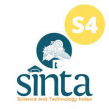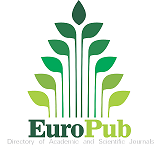IDENTIFICATION OF IMAGE AREA CONCEPT OF TSUNAMI DISASTER RESPONSE IN COASTAL SPATIAL Case Study : Serangan Island, Denpasar, Bali
Abstract
Serangan Island is one of the favourite tourist destinations in Bali which is the result of reclamation in 1995-1998, famous for its image as "Turtle Island", the presence of Sakenan Temple, white sand beaches, marine tourism, watersport, coral reef cultivation and seaweed, and the the fishing village of Bugis and Bali. However, behind the many tourism potentials, Serangan Island is threatened with earthquakes and tsunamis because the island is located on the south coast facing the Indian Ocean and the island's relatively low topography and inland elevation. In 2014, the Provincial Government of Bali through the Regional Disaster Management Agency (BPBD) built a communal space in the form of a Temporary Evacuation Place (TES) which is integrated with the Serangan Village Market. This research will identify in detail the implementation of the concept of the image of the disaster response area in the coastal area of Serangan Island. The research method used is descriptive qualitative with purposive sampling, with the use of the image theory of the area and disaster response architecture as the basis of this research. The results of the study show that the concept of the image of the Serangan Island area has also applied the concept of disaster mitigation both in architecture and in spatial planning. This identification has been seen in the concept of paths, edges, districts, nodes and landmarks. The main attacks are on residential areas, although in some parts the potential and function of disaster mitigation aspects need to be maximized.
Keywords – image area concept, tsunami disaster response, coastal spatial
Full Text:
PDFReferences
Afrizal. (2014). Metode Penelitian Kualitiatif. Jakarta : Rajawali Pers.
Almalki, Sami. 2016. Integrating Qualitative and Qualitative Data in Mixed Methods Research-Chalenges and Benefits. Journal of Education and Learning, vol. 5, No. 3, Hlm. 288-296. Doi: 10.5539/jel.v5n3p288.
Bali, T. (2016, Desember 9). Eco Resort Serangan Sedot 50.000 Tenaga Kerja, Januari 2017 Genjot Pembangunan. Retrieved from http://bali.tribunnews.com: http://bali.tribunnews.com/2016/12/09/eco-resort-serangan-sedot-50000-tenaga-kerja-januari-2017-genjot-pembangunan?page=all
Darmawan, I. G. (2018). Faktor-Faktor Pengaruh Perubahan Penggunaan Lahan Ulayat Akibat Reklamasi di Pulau Serangan. Undagi, 6, 37-44.
Hilal, Alyahmady Hamed and Saleh Said Alabri. 2013. Using NVIVO for Data Analysis in Qualitative Research. International Interdisciplimary Journal of Education, Vol. 2, Issue 2, Hlm. 181-186.
Kompas. (2017, 4 14). Bali Dinobatkan sebagai Destinasi Wisata Terbaik di Dunia. Retrieved from https://travel.kompas.com: https://travel.kompas.com/read/2017/04/14/200540027/bali.dinobatkan.sebagai.destinasi.wisata.terbaik.di.dunia
Lynch, K. 1975. The Image of The City. London: The MIT Press.
Purwanto, E. 2001. Pendekatan Pemahaman Citra Lingkungan Perkotaan (melalui kemampuan peta mental pengamat). Dimensi Teknik Arsitektur. 29, (1): 85-92.
Sukawi. 2008. Menuju Kota Tanggap Bencana (Penataan Lingkungan Permukiman Untuk Mengurangi Resiko Bencana. Semarang: Jurusan Arsitektur Fakultas Teknik UNDIP.
Sutarja, I. N. 2015. Rencana Tempat Evakuasi Sementara (TES) Pada Kawasan Rawan Bencana Tsunami Provinsi Bali. Denpasar: Universitas Udayana.
Wikantari, R. (2017). Model tata Ruang dan Bangunan Tanggap Bencana di Pulau Kecil Kasus Pulau Samalona, Makassar. Makassar: Universitas Hassanuddin.
DOI: https://doi.org/10.17509/jare.v2i2.29274
Refbacks
- There are currently no refbacks.
Copyright (c) 2020 I Gede Surya Darmawan

This work is licensed under a Creative Commons Attribution-NonCommercial-ShareAlike 4.0 International License.

This work is licensed under a Creative Commons Attribution-ShareAlike 4.0 International License.








